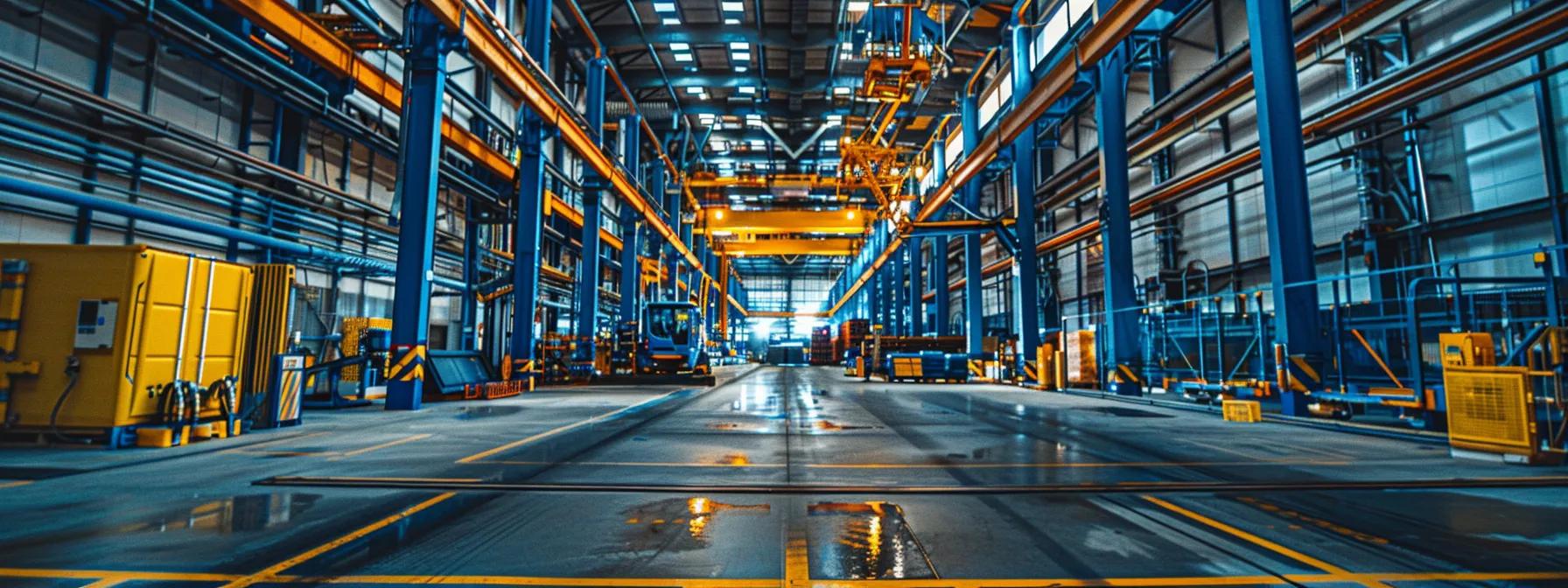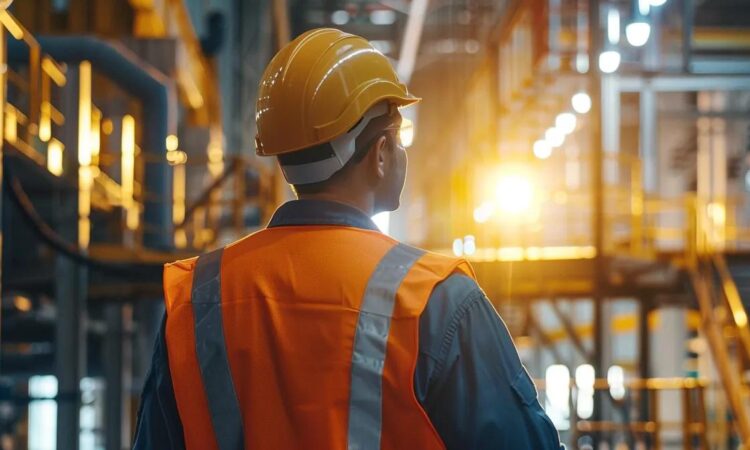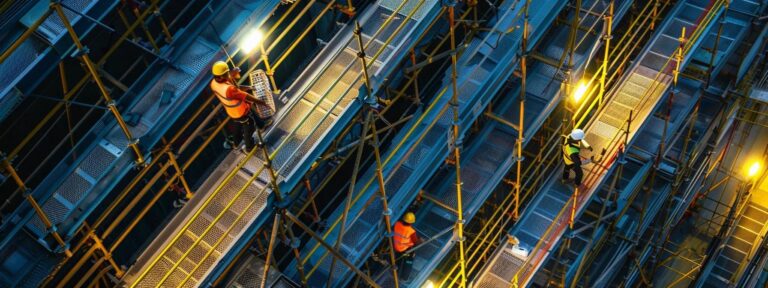How Safety Compliance Audits and Fall Protection Engineering Improve Workplace Safety Systems
Safety compliance audits and fall protection engineering, combined with design-installation of ladder systems and lifeline-systems, are integral to a comprehensive safety management system. These practices, along with annual-maintenance measures employed by industries we serve, ensure that workplace safety standards exceed regulatory requirements, protect employees, boost operational efficiency, and enhance an organization’s reputation. This article, featured on our blog and detailed in our about us section, examines safety compliance audits, fall protection engineering, and their value in maintaining safer work environments. For more information, get a free quote from usfallprotection.
What Are Safety Compliance Audits and Why Are They Essential?
What Is a Safety Compliance Audit?
A safety compliance audit evaluates an organization’s safety practices to ensure adherence to occupational safety and health regulations. Audits identify gaps in protocols and assess whether existing measures effectively protect employees from hazards. By benchmarking against standards like OSHA regulations and ISO 45001, audits, using checklists, on-site inspections, and documentation reviews, verify overall compliance.
How Do Safety Compliance Audits Ensure OSHA Compliance?
Audits ensure OSHA compliance by examining workplace conditions against OSHA standards. They identify non-compliant practices, document deficiencies, and suggest corrective actions. Routine inspections verify that emergency exits, equipment safety, and proper signage are in place, reducing the risk of OSHA violations and associated fines or litigation.
What Are the Key Steps in Conducting a Safety Compliance Audit?
Key steps include planning, data collection, gap analysis, reporting, and follow-up evaluations. Auditors review current policies and previous reports, conduct systematic inspections using detailed checklists and employee interviews, compare actual conditions with OSHA guidelines, then compile findings with recommendations along with a follow-up plan to ensure corrective measures are implemented.
How Do Safety Compliance Audits Identify and Mitigate Workplace Risks?
By evaluating hazards that may lead to injuries or property damage, audits identify risks such as inadequate fall protection, equipment malfunctions, or chemical hazards. The process quantifies risk factors, prioritizes them, and recommends specific controls. Continuous monitoring and corrective actions result in reduced accident rates and improved worker safety.
What Are the Benefits of Regular Safety Compliance Audits?
Regular audits improve regulatory adherence, enhance safety culture, and reduce incident frequency by identifying hazardous conditions early and promoting continual improvements. They reduce liability risks, help control insurance premiums, and demonstrate a strong commitment to worker safety, fostering an environment where risks are managed proactively.
How Does Fall Protection Engineering Enhance Workplace Safety Systems?

What Is Fall Protection Engineering and Its Core Components?
Fall protection engineering involves the design, implementation, and maintenance of systems that prevent falls in work areas where employees operate at heights. Its core components include designing guardrail systems, safety nets, personal fall arrest systems (PFAS), and ladder safety mechanisms. These elements are engineered following strict guidelines and standards, with design considerations for environmental factors such as wind and vibration to optimize performance.
What Types of Fall Protection Systems Are Commonly Used?
Common systems include guardrails, which provide a physical barrier at elevated edges; safety nets, which catch employees who may fall; and personal fall arrest systems, which combine harnesses, lanyards, and anchorage points. Some workplaces also use travel restraint systems to limit movement near dangerous edges. The choice depends on the specific work environment and activity, ensuring optimal protection for at-risk employees.
How Are Fall Protection Systems Designed and Installed?
The process begins with a risk assessment to identify fall hazards. Safety engineers then design systems according to industry standards such as ANSI and OSHA, select high-quality materials, and install systems with trained professionals. Once installed, the systems undergo testing and inspections to confirm they perform as intended under real-world conditions.
Why Is Maintenance and Inspection Critical for Fall Protection Equipment?
Maintenance and inspection are crucial because these systems are subject to wear and environmental stress. Regular checks ensure that harnesses, anchors, and netting remain in good condition and free from damage. Preventative maintenance helps detect issues before they become hazards, ensuring that fall protection devices are always reliable when needed.
How Does Fall Protection Engineering Reduce Fall-Related Injuries?
Fall protection engineering creates multiple layers of defense to intercept falls and absorb impact forces during falls, thereby reducing injury severity. Properly engineered systems can decrease severe injuries by up to 50%. When combined with regular safety training and audits, these systems improve response times and outcomes during a fall, leading to safer work environments and fewer costly disruptions.
How Do Safety Compliance Audits and Fall Protection Engineering Work Together?
How Do Audits Inform Fall Protection System Improvements?
Audits provide feedback that drives immediate improvements in fall protection systems. They can reveal outdated equipment, installation deficiencies, or maintenance lapses that undermine safety. If an audit finds a guardrail system does not meet current standards, for example, safety engineers can redesign it with better materials or improved anchorage. This feedback loop helps fall protection measures evolve continuously.
What Role Does Risk Assessment Play in Both Audits and Engineering?
Risk assessments are central to both audits and engineering. In audits, they help identify hazards and assess their likelihood and severity; in engineering, they guide the design and selection of protective measures. Quantifying risks enables organizations to prioritize safety interventions and allocate resources efficiently, ensuring that solutions are well-targeted and effective.
How Can Combined Services Ensure Comprehensive Workplace Safety?
Using safety compliance audits and fall protection engineering together offers a holistic approach to safety by addressing both administrative and physical risk controls. Audits provide objective insights about practices, while engineering delivers practical solutions. This integration helps organizations develop comprehensive safety programs covering policy, training, design, and maintenance—vital in complex environments such as construction sites or manufacturing plants.
How Does Apex Safety Solutions Customize Integrated Safety Solutions?
Apex Safety Solutions tailors safety solutions by combining industry experience with advanced risk assessment tools. They work closely with clients to design, implement, and maintain systems that address specific hazards. Customization includes detailed audits, hazard evaluations, and engineered fall protection measures that integrate with existing protocols, ensuring recommendations are data-driven and aligned with regulatory standards.
What Are the OSHA Requirements for Safety Compliance and Fall Protection?

What OSHA Standards Govern Safety Compliance Audits?
OSHA standards require regular inspections and assessments to identify hazards and rectify deficiencies. Under the OSHA General Duty Clause and specific regulations related to machinery, electrical safety, and hazardous materials, employers must maintain a safe workplace. Audits must document current safety measures, identify needed improvements, and ensure that corrective actions comply with OSHA, preventing injuries and avoiding penalties.
What Are OSHA’s Fall Protection Requirements?
OSHA mandates that employees working at heights of 6 feet or more above a lower level receive fall protection through guardrails, safety nets, or personal fall arrest systems, depending on job and work environment. These systems must be designed, installed, and maintained according to established guidelines. Employers are also required to train employees in the proper use of these devices, reinforcing a safety culture.
How Often Should Safety Audits and Fall Protection Inspections Be Conducted?
Safety audits and fall protection inspections should occur at least annually, with more frequent reviews in high-risk industries. OSHA guidelines advocate regular inspections to ensure all measures remain effective and any new hazards are promptly identified. Both scheduled audits and unscheduled spot checks help prevent incidents by addressing deteriorating equipment or lapses in safety protocols.
What Are Common OSHA Violations Related to Fall Protection?
Common violations include missing or inadequate guardrails, damaged personal protective equipment, insufficient training, and lack of maintenance. Such issues arise when workplaces do not meet design and installation standards or fail to use equipment properly. Rigorous audits and ongoing training are essential to address these shortcomings, maintain OSHA compliance, and promote workplace safety.
How Does Safety Training Complement Audits and Fall Protection Engineering?
What Types of Safety Training Support Fall Protection?
Effective safety training for fall protection covers the proper use of personal protective equipment, hazard recognition, emergency response procedures, and routine inspections. These training programs educate employees on technical aspects—such as harness use and lanyard checks—as well as the principles of working safely at heights, reducing the likelihood of fall-related incidents.
How Does Training Improve Compliance Audit Outcomes?
Well-trained employees adhere more closely to safety practices. This leads to correct use of protective equipment and timely reporting of hazards, reducing non-compliance findings during audits. Regular training fosters a safety-oriented culture where employees actively participate in inspections and corrective actions, contributing to improved compliance overall.
What Are Best Practices for Effective Workplace Safety Training?
Best practices include a mix of classroom instruction, hands-on demonstrations, and regular refresher courses. Incorporating real-world scenarios and simulations enhances learning, while tailoring training to specific workplace hazards ensures relevance. Multi-modal approaches—using video modules, interactive sessions, and on-the-job mentoring—help maintain engagement and ensure employees remain current with safety protocols.
How Does OSHA Training Fit Into Workplace Safety Programs?
OSHA training provides the foundational knowledge necessary to identify, assess, and mitigate hazards, covering topics such as fall protection, machinery guarding, chemical handling, and emergency response. Incorporating OSHA training into routine programs ensures employees are updated on current regulations and best practices, helping maintain compliance and fostering a proactive safety culture.
What Are the Measurable Benefits of Implementing Safety Compliance Audits and Fall Protection Engineering?

How Do These Services Reduce Workplace Accidents and Injuries?
Implementing audits and fall protection engineering can reduce accidents and injuries by identifying hazards, facilitating timely corrective actions, and ensuring protective systems are maintained. Organizations with robust safety programs can experience up to a 40% reduction in accidents and a notable decrease in injury severity. By eliminating hazards, enforcing compliance, and providing ongoing training, these measures also reduce lost workdays and boost overall productivity.
What Is the Impact on Regulatory Compliance and Liability Reduction?
An integrated approach to audits and engineering enhances adherence to OSHA and other regulatory requirements, reducing fines and legal risks. Maintaining detailed documentation and regular inspections lowers insurance costs and liability while improving stakeholder confidence in an organization’s commitment to employee safety.
How Do Improved Safety Systems Affect Employee Morale and Productivity?
Robust safety systems boost employee confidence and morale, leading to improved efficiency and productivity. Workers who feel safe are more engaged, experience less absenteeism, and report higher job satisfaction. Investment in state-of-the-art safety infrastructure is often linked with increased operational uptime and a more committed workforce.
What Are the Cost Savings From Preventing Fall-Related Incidents?
Preventing fall-related incidents leads to lower medical expenses, reduced workers’ compensation claims, and less production downtime. Every dollar invested in safety can yield significant savings by avoiding high injury-related costs and minimizing interruptions that affect overall cost efficiency and financial performance.
List of Key Cost Benefits:
- Reduced medical and treatment expenses
- Lower insurance premiums and workers’ compensation claims
- Increased operational uptime and productivity
- Enhanced employee retention and reduced recruitment costs
How Can Organizations Get Started With Safety Compliance Audits and Fall Protection Engineering?
What Should Be Included in a Safety Compliance Audit Checklist?
A comprehensive checklist should review emergency action plans, personal protective equipment records, training logs, hazard assessments, and maintenance records for safety equipment. It must cover areas such as fall protection systems, fire prevention, chemical safety, and machine guarding, along with relevant documentation like safety policies and incident reports. An effective checklist also includes procedures for continual monitoring and regular updates as regulations evolve.
How to Choose the Right Fall Protection Systems for Your Workplace?
Selecting the optimal fall protection system starts with a detailed risk assessment to identify potential hazards. Considerations include the work environment, height and type of work, and applicable industry regulations. Organizations should review options such as guardrails, safety nets, and personal fall arrest systems based on performance, durability, and ease of maintenance. Safety engineers and third-party audit results can offer valuable insights into selecting solutions tailored to specific operational needs.
What Are the Steps to Partner With Apex Safety Solutions?
To partner with Apex Safety Solutions, organizations begin with an initial consultation that includes a site visit, risk assessment, and review of current safety measures. Based on this evaluation, the company provides a customized safety roadmap with recommendations for audits and fall protection improvements. After agreeing on a strategic plan, implementation begins with system installation or upgrades, followed by routine maintenance and periodic re-audits. Ongoing support and training ensure continual safety enhancements.
How to Maintain and Update Safety Systems Over Time?
Safety systems require scheduled inspections, preventive maintenance, and ongoing employee training. Organizations should establish continuous review cycles aligned with regulatory changes and industry best practices. Regular audits help identify wear or outdated equipment, while technology—such as safety management software—can streamline updating processes. A proactive maintenance strategy extends equipment life and ensures functionality during emergencies.
Table: Summary of Key Safety and Fall Protection Benefits
Before exploring further details, the following table summarizes the benefits provided by robust safety compliance audits and fall protection engineering:
| Component | Key Benefit | Quantifiable Impact | Regulatory Standard |
|---|---|---|---|
| Safety Compliance Audits | Identifies and mitigates hazards | Up to 40% reduction in incidents | OSHA, ISO 45001 |
| Fall Protection Systems | Prevents falls and minimizes injuries | 50% reduction in severe injuries | OSHA, ANSI |
| Risk Assessment | Prioritizes interventions | Increases safety efficiency by 30% | OSHA General Duty Clause |
| Employee Training | Enhances safety culture | Increases productivity by 20% | OSHA training guidelines |
| Preventive Maintenance | Prolongs equipment lifespan | Cuts replacement costs by 25% | Industry best practices |
This table highlights measurable outcomes and ties benefits to established standards and performance metrics. It underscores the direct correlation between robust safety practices and improved operational outcomes through an integrated system of audits, engineering, training, and maintenance.
Following this summary, organizations can clearly see how comprehensive safety practices promote employee well-being and regulatory compliance.
Frequently Asked Questions
Q: How often should organizations conduct safety compliance audits?
A: At least annually, with more frequent inspections in high-risk environments to ensure continuous compliance and early hazard detection.
Q: What is the significance of fall protection engineering in reducing workplace injuries?
A: It significantly reduces injuries by designing systems that prevent falls at elevation through physical barriers and arrest systems, potentially reducing injury severity by up to 50%.
Q: How do regular maintenance and inspections impact safety system effectiveness?
A: They ensure safety equipment remains in optimal condition, reduce equipment failure risks, and allow timely corrective actions, contributing to a lower incident rate.
Q: Can employee training help improve the outcomes of safety compliance audits?
A: Yes, comprehensive training fosters a stronger safety culture, better protocol adherence, and fewer violations during audits, thereby enhancing overall workplace safety.
Q: What role does risk assessment play in both audits and the design of fall protection systems?
A: It identifies potential hazards, prioritizes risks by severity and frequency, and informs both the audit process and engineering design, ensuring targeted and effective safety measures.
Q: How does partnering with a specialized safety solutions provider benefit an organization?
A: It leverages expert risk assessments, customized safety strategies, continual maintenance support, and integrated solutions to ensure compliance and enhanced employee protection.
Final Thoughts
Integrating safety compliance audits with fall protection engineering provides a multi-layered defense against workplace hazards. By combining systematic risk assessments, regular updates of safety systems, and ongoing employee training, companies create a resilient safety culture that minimizes accidents, meets regulatory requirements, and improves operational efficiency. These practices protect employees, reduce costs, and boost productivity, positioning organizations as leaders in safety and ensuring sustainable success in a regulated environment.



